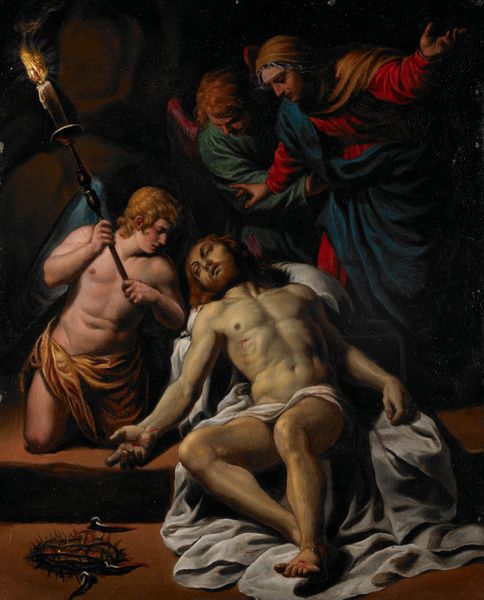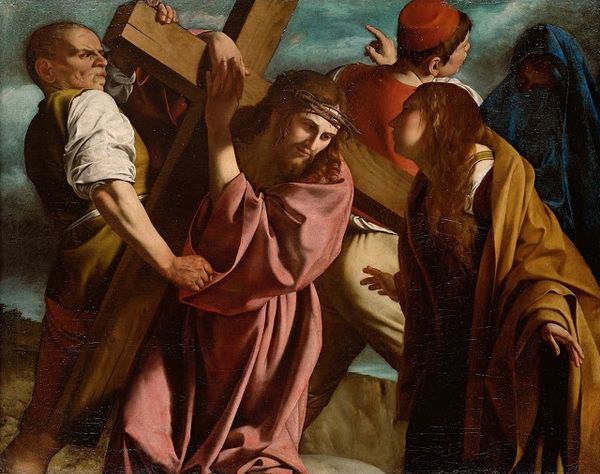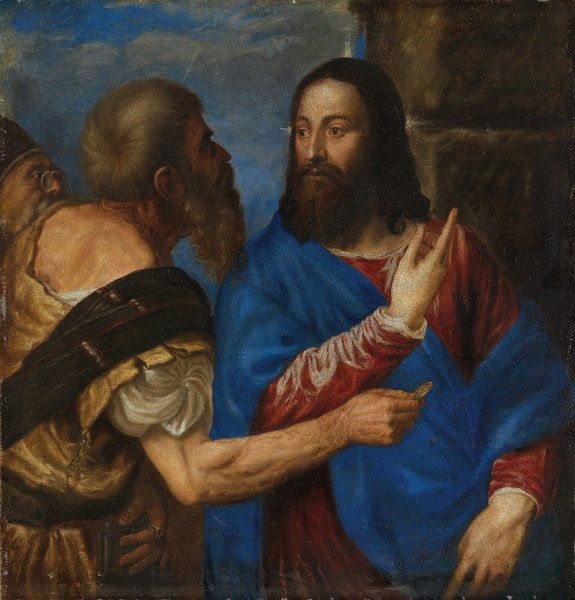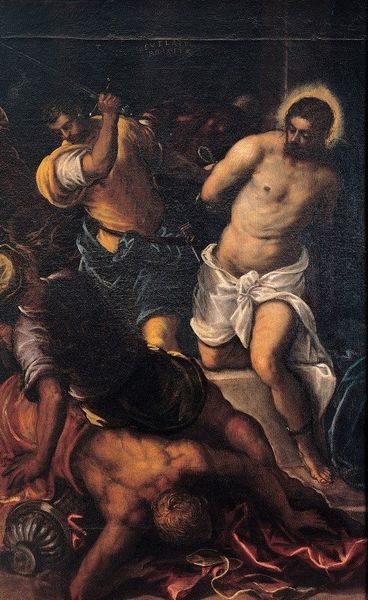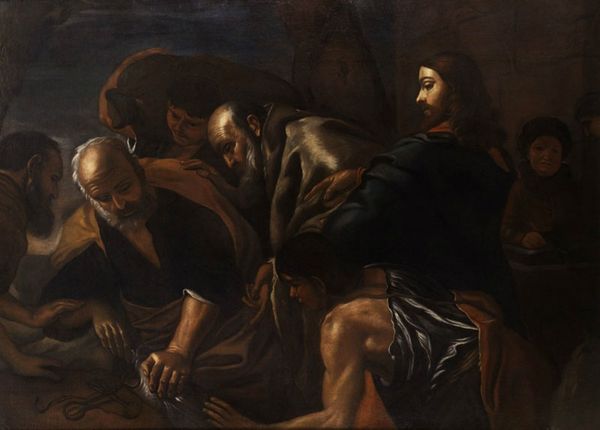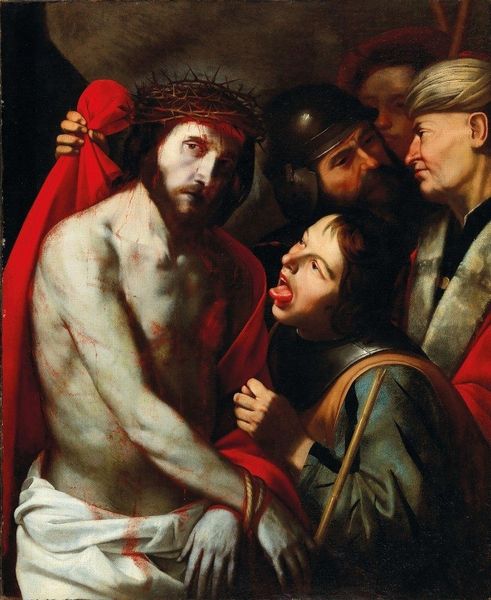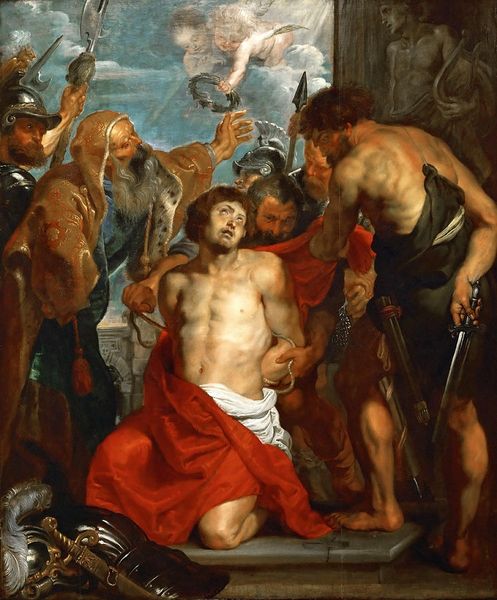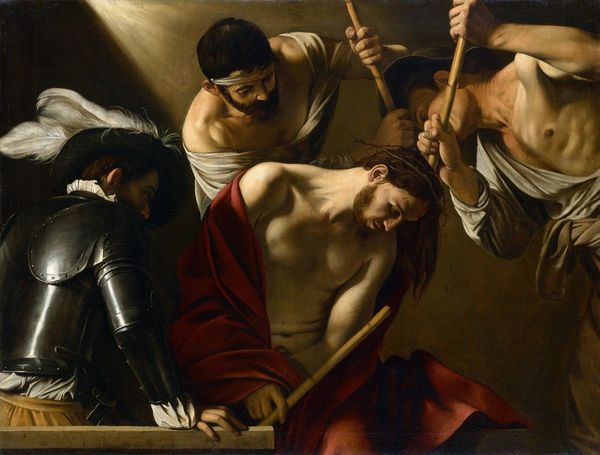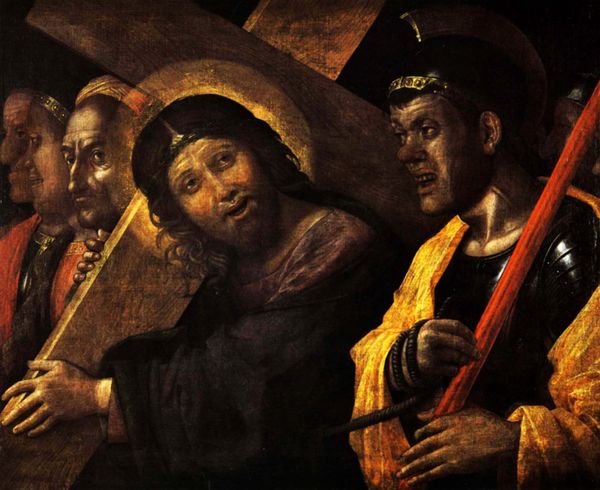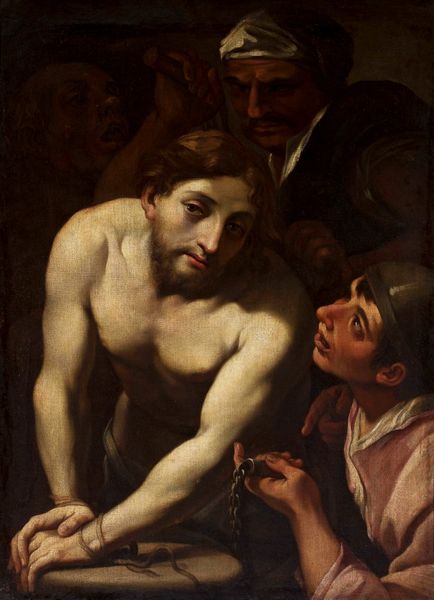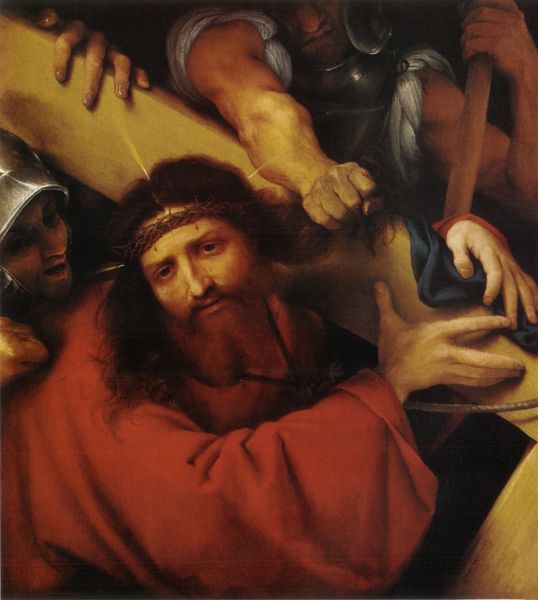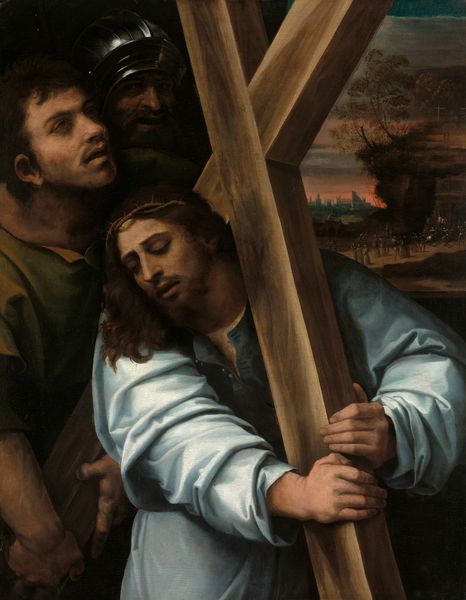
painting, oil-paint
#
narrative-art
#
baroque
#
painting
#
oil-paint
#
figuration
#
chiaroscuro
#
history-painting
Copyright: Public Domain: Artvee
Editor: So, here we have Caravaggio’s "The Taking of Christ," painted sometime in the early to mid-17th century using oil paint. The dramatic lighting really strikes me; it feels almost like a stage play. What historical context helps us understand this scene’s enduring power? Curator: Absolutely. Caravaggio's choices, like this stark use of light and shadow known as chiaroscuro, are profoundly linked to the political and religious climate of the Counter-Reformation. How do you think presenting Christ’s arrest in such a raw and almost theatrical manner served the Church’s goals? Editor: I guess it makes the event more accessible, more human? Less about divine right and more about relatable suffering. Curator: Precisely. The Church sought to connect directly with the faithful. Caravaggio rejected the idealization of earlier Renaissance art. Instead, he uses realistic figures and everyday settings, which had a potent emotional effect. He aimed to provoke an emotional response from viewers, drawing them into the story, almost implicating them in the event. It makes one consider, where do we stand in this act of betrayal? Editor: I hadn’t thought about the political motivation behind the art so much. So, the choices that feel almost purely aesthetic, like the light and dark, are actually strategic in terms of power? Curator: Exactly! Caravaggio was a master of manipulating visual elements to serve a broader socio-political purpose. Editor: This gives me so much more to consider, thank you! I won't look at baroque painting the same way again. Curator: A deeper understanding of its cultural and historical role enriches the viewing experience!
Comments
No comments
Be the first to comment and join the conversation on the ultimate creative platform.
